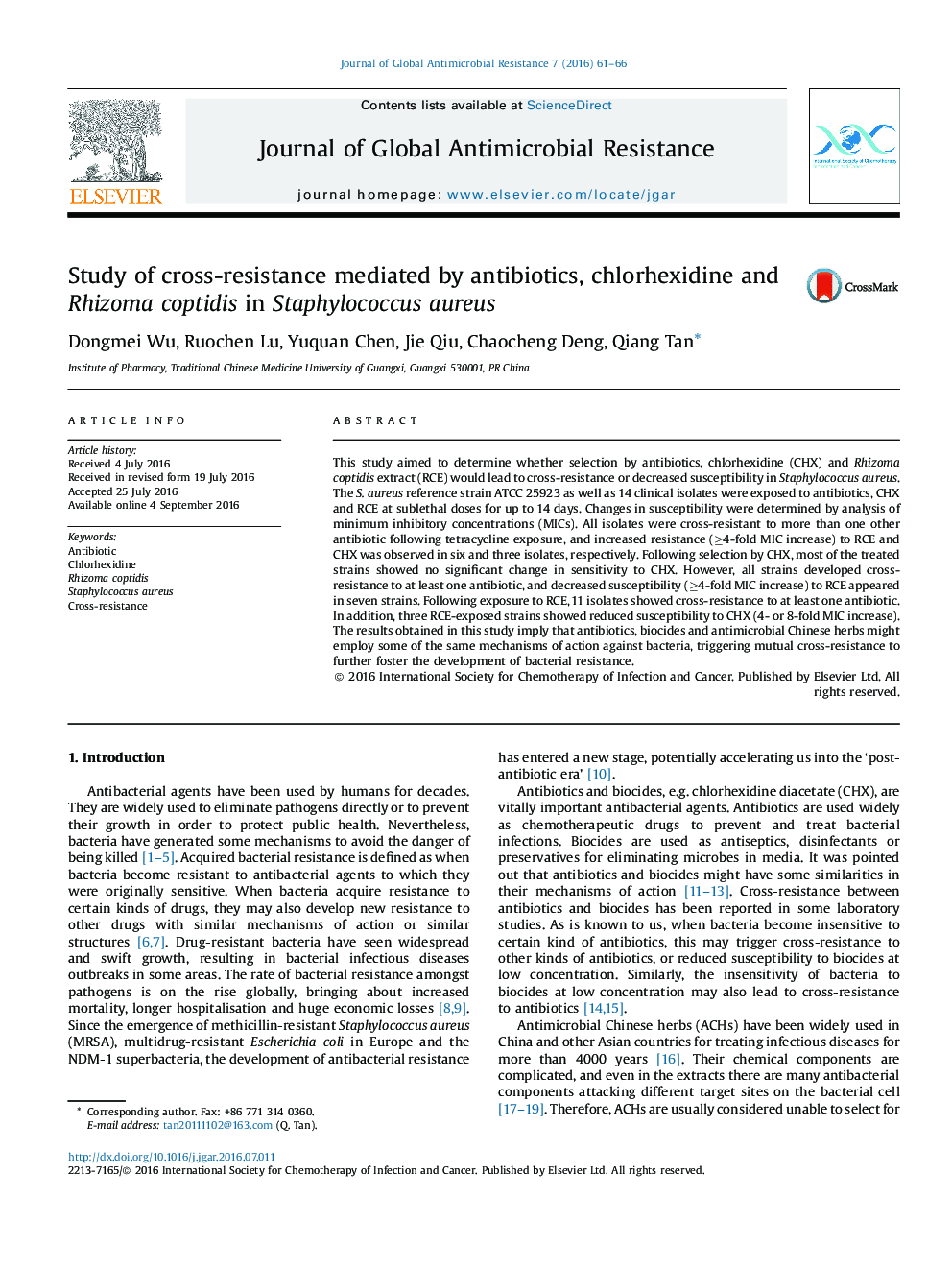| Article ID | Journal | Published Year | Pages | File Type |
|---|---|---|---|---|
| 3405572 | Journal of Global Antimicrobial Resistance | 2016 | 6 Pages |
•Antibiotics, biocides and antimicrobial Chinese herbs (ACHs) might share some bacterial resistance mechanisms.•Following induction by sub-MICs of chlorhexidine and Rhizoma coptidis extract, bacteria became cross-resistant to antibiotics.•Strategies are called for to control the abuse of antibiotics, biocides and ACHs.
This study aimed to determine whether selection by antibiotics, chlorhexidine (CHX) and Rhizoma coptidis extract (RCE) would lead to cross-resistance or decreased susceptibility in Staphylococcus aureus. The S. aureus reference strain ATCC 25923 as well as 14 clinical isolates were exposed to antibiotics, CHX and RCE at sublethal doses for up to 14 days. Changes in susceptibility were determined by analysis of minimum inhibitory concentrations (MICs). All isolates were cross-resistant to more than one other antibiotic following tetracycline exposure, and increased resistance (≥4-fold MIC increase) to RCE and CHX was observed in six and three isolates, respectively. Following selection by CHX, most of the treated strains showed no significant change in sensitivity to CHX. However, all strains developed cross-resistance to at least one antibiotic, and decreased susceptibility (≥4-fold MIC increase) to RCE appeared in seven strains. Following exposure to RCE, 11 isolates showed cross-resistance to at least one antibiotic. In addition, three RCE-exposed strains showed reduced susceptibility to CHX (4- or 8-fold MIC increase). The results obtained in this study imply that antibiotics, biocides and antimicrobial Chinese herbs might employ some of the same mechanisms of action against bacteria, triggering mutual cross-resistance to further foster the development of bacterial resistance.
